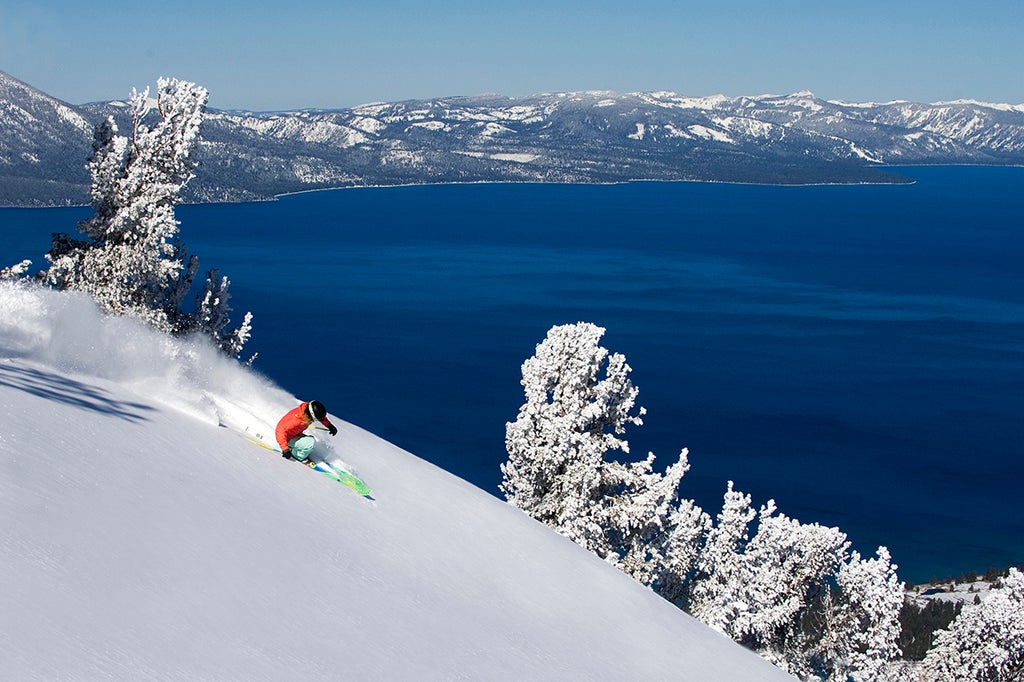Products You May Like
Get full access to Outside Learn, our online education hub featuring in-depth fitness, nutrition, and adventure courses and more than 2,000 instructional videos when you sign up for Outside+
Sign up for Outside+ today.
The West Coast of the U.S. spans well over 1,000 miles, sprawling across three states that are sandwiched between Canada and Mexico. A series of mountain ranges stretch down the Pacific coast including the Cascade, Coast, and Sierra Nevada ranges. What that means for skiers is that microclimates dictate the snow and weather at the multitude of resorts in this region.
“Snow in the Northwest typically has a much higher water content level than inland states so our snow is heavier and denser,” says Tracy Gibbons, Category Merchandise Manager for Sturtevant’s/Christy Sports/BootDoctors, in Bellevue, Wash. “Some refer to the heavier snow as Cascade Concrete or Sierra Cement, but for those who grew up in the Northwest, we refer to it as powder on most days.”
Areas like Crystal Mountain, which tops out at just over 7,000 feet, have summits close to the base elevation of Mammoth. Since the higher you go, the drier the snow gets, elevation plays a key role in the snow quality of the Pacific Northwest.
“With a combination of heavier, denser snow, and often less groomed terrain, we sell more all-mountain skis (85-95mm for women) and (95-105mm for men) that have a bit more sustenance to them,” says Gibbons. “These types of constructions, with denser wood or a bit of metal, have a tendency to blast or push through the heavier conditions with more consistency and predictability no matter where you are on the mountain.”
Related: Why shop pros prefer skis with some metal in them
Gibbons says she often recommends a longer length ski when you’re skiing these types of conditions, depending on the skier’s ability level.
“I like to compare it to ice skating,” she says. “If you are on a flat slope and a very smooth surface, then a ski (or blade) is very maneuverable and provides sufficient stability. As the mountain gets steeper and the snow less consistent, you need a longer ski under you to provide more stability.”

California has a variety of resorts, each with their own microclimates. “Mammoth’s snow quality is significantly different than Tahoe’s because it’s higher and has unique weather cycles,” says Silver Chesak, CEO of Footloose Sports in Mammoth Lakes, Calif. “Tahoe resorts can get rain, and Kirkwood has its own snow cycle. Since Mammoth is in a low spot in the Sierras, it can be a wind tunnel, but it gets snow a lot of the time.”
Read more: The top 10 snowiest resorts in the West
Mammoth is famous for wind buff snow, and many locals feel wind buff is the best skiing condition other than powder. The wind blows on east facing, shady tops of the mountain so the snow quality is consistent. Also, elevation helps keep the snow colder than some southern California resorts.
“The groomers stay super good when there isn’t a lot of snow, so we recommend narrow-waisted carving machines, with a lot of sidecut, which are some of the best skis that the industry makes,” says Chesak. “Groomers can get a little boring, so it’s exciting to get on edge and ski a shorter ski with a lot of sidecut, but when the wind really starts blowing, it’s nice to have a little wider waist.”
Chesak says he recommends skis with wood core constructions and metal laminates, and that the trend has moved away from trying to ski lightweight backcountry skis on the mountain because they don’t handle the variable conditions well.
According to data from SIA and NPD, 40 percent of the top selling skis in 2022 ranged between 91-100mm, followed by 33 percent between 80-90mm, and that’s the trend that Chesak sees reflected by locals and visitors alike. “We haven’t had a huge winter in a while, so we mostly sell skis in the range of 88-102, which make for a great everyday Mammoth ski.”
Chesak’s pro tip is to avoid lower-end skis, which are constructed to be inexpensive. “Save money in the long run by buying a high-end ski because it’ll perform longer,” he says. “Get a performance ski that’s not too stiff or heavy and has perforated metal or cutouts. The result is a ski that’s stable and smooth, but that’s easy to ski even for an intermediate skier.”
More Gear Advice
Can today’s wide all-mountain skis hack it back East?
How wide is too wide for resort skis?
Do ski boots have a shelf life?
